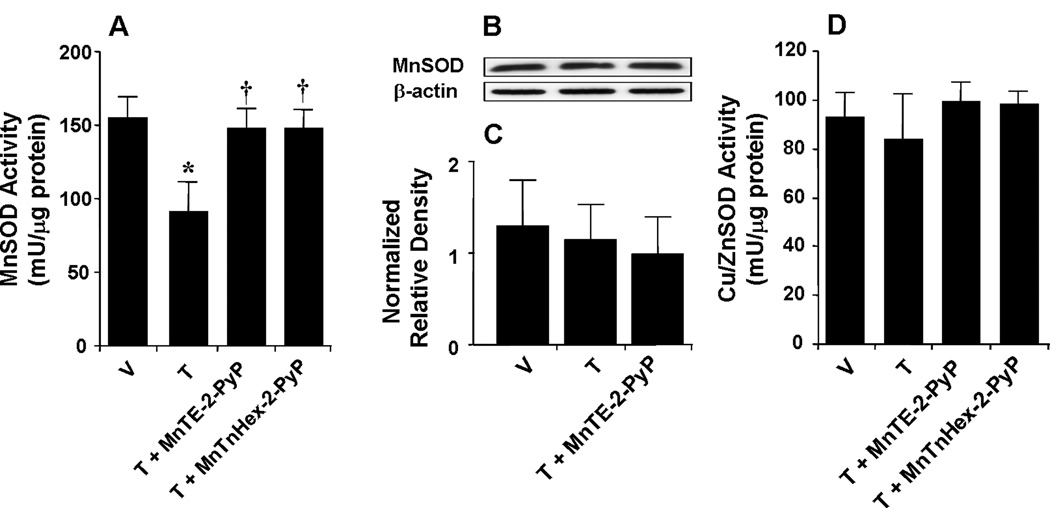Fig. 2.
When compared to the vehicle group (V) repeated administration of morphine (tolerant group, T) led to significant functional enzymatic inactivation of MnSOD (A) but not Cu,ZnSOD (D) as evidenced by loss of its catalytic activity to dismute superoxide as measured spectrophotometrically. Co-administration of morphine with MnTE-2-PyP5+ (3 mg/kg/day, n=12) or MnTnHex-2-PyP5+ (0.1 mg/kg/day, n=12) restored the enzymatic activity of MnSOD. When compared to the vehicle group, repeated administration of morphine did not change the total amount of MnSOD in whole brain tissue homogenates as measured by Western blotting analysis. Gels shown in B are representative from gels obtained in 3 animals. A composite of the densitometry data resulting from these experiments is shown in C. *P<0.001 for Morphine alone vs Vehicle; †P<0.001 for Morphine+drug-treated vs Morphine alone.

